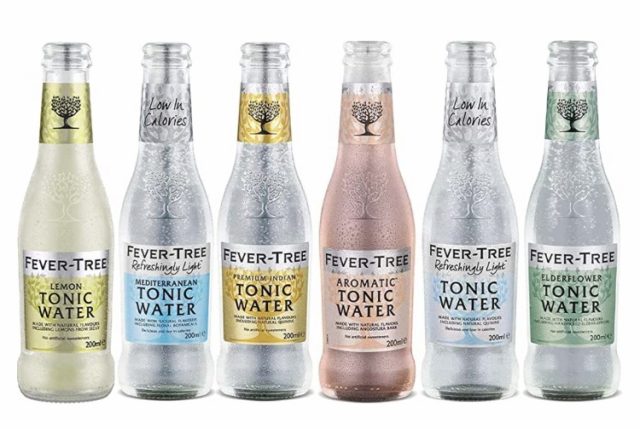This website uses cookies so that we can provide you with the best user experience possible. Cookie information is stored in your browser and performs functions such as recognising you when you return to our website and helping our team to understand which sections of the website you find most interesting and useful.
Fever-Tree paints a ‘fast-improving picture’ of profits
Premium mixer brand Fever-Tree has predicted a notable improvement in its profit margins from next year as it comes to terms with the heavy impact of inflationary cost pressures.

Tim Warrillow, Fever-Tree’s chief executive, has forecast “a fast improving picture on the margin front” from next year as he expects lower transatlantic freight charges and glass costs to feed through to the bottom line.
The past few years have been challenging for Fever-Tree; the pandemic coinciding with the company’s further drive into the US being disrupted by production problems that were compounded by the fallout from the Ukraine crisis.
Fever-Tree’s shares slumped from a heady £38.50 in 2019, which valued the company at more than £4 billion, to just above £8 earlier this year.
In its 2022 results, underlying earnings slumped by 37% to £39.7 million on an adjusted basis as margins fell from 20.2% to 11.6%, but this was ahead of the most recent guidance of £39 million, and sent the shares up to £11.80.
Full-year revenues grew by 11% to £344.3 million as double-digit growth in the US, Europe and the Rest of World more than offset a 2% fall in the UK market to £116.2 million, which still accounts for about a third of total revenues.
Pre-tax profits last year fell by 44.1% to £31 million, while cash fell from £166.2 million to £95.3 million after payment of a £50 million special dividend.
Good news
The good news for Fever-Tree is that the wholesale price of gas is falling fast, which will have a positive impact on its demand for glass – 80% of the company’s products are sold in bottles.
More significant is the hope that the brand will be able to significantly reduce its need to ship product across the Atlantic as its US production increases.
Fever-Tree has kept the reasons for the delay to its US operations fairly close, at one stage citing “union problems”.
And last week it was forced to refute suggestions by analysts that it had ceded ground in the US to Q Mixers, its nearest competitor in the premium mixers sector, triggering concern that competition was intensifying, a factor that may limit its pricing flexibility
But the group is looking to better times.
Andy Branchflower, chief financial officer, says the company is deploying a “wide range of initiatives to drive margin improvements”.
“Some of those macro factors that disproportionately affected us, such as the impact of European energy on glass costs and transatlantic freight costs, are beginning to soften. We’re also reducing our freight costs by increasing our local US production.
“The whole picture gives us confidence that we’re going to drive margin improvement through 2024, 25 and 26,” he told The Times.
Energy costs may be falling to a more manageable level but it is telling that Coca-Cola Europacific Partners recently told Reuters that glass costs would continue to rise by the “mid-teen to low double digits” this year.
The key question, however, is just how far Fever-Tree will be able to increase its margins by upping prices at a time of high inflation.
Will consumers be willing to pay more on top of the already significant premiums over competitor products and especially supermarket-own labels?
Warrillow said: “With consumer confidence we’re starting to see a slow rebuild in the UK. We’re expecting UK revenues to grow by single digits this year, with the US, Europe and the rest of world growing faster.”
He has already increased UK prices by 5% this year, which is less than half the rate of his input cost rises.
Enigmatically he said he had avoided the double-digit increases imposed by rivals as he did not want to put off loyal customers who were already paying a premium price.
A cynic might wonder whether he though that 5% was the biggest increase consumers would stomach and whether that reflected a level of price resistance.
By comparison, Diageo has increased the price of Guinness and many of its premium spirits by double-digit percentages.
On the plus side, however, while UK inflation is running at 10.4%, the Bank of England’s governor believes that it will fall rapidly to reach nearer 4% by late summer, which will go some way to underpinning Fever-Tree’s confidence that drinkers will not balk at the checkout.
“The Fever-Tree brand, as shown by our highest-ever combined market share in the UK, and leadership position across many markets, is stronger than it has ever been,” Warrilow said.
“We remain committed to investing for the long-term, both within our core mixer category but also through our expansion into adjacent categories such as adult soft drinks and cocktail mixers,” he added.
Even so, it will be a long time before the company gets back to the heady pre-pandemic days when its shares peaked at £38.50.

